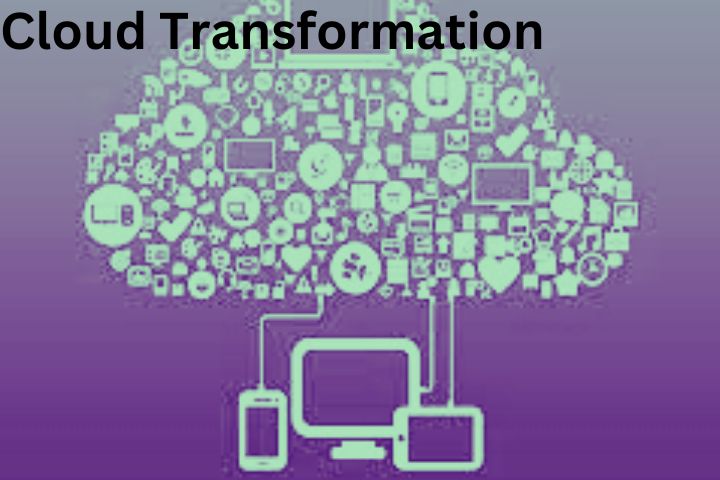
Until the beginning of the cloud age, companies stored their machine-generated data locally for analysis. They had to take care of themselves – from buying the hardware, maintaining the infrastructure, installing and updating the analysis software, to implementing security measures. These tasks were expensive, time-consuming, and difficult to scale. Cloud analytics has been developed as a solution to this problem, making data storage and analysis much cheaper and available to businesses of all sizes.
What is cloud analytics?
Cloud analyticsgenerally refers to data analysis processes that include the following steps:
- extraction
- Load
- transformation
- analysis
- visualization
- modeling
- other complex tasks
These processes run on a public or private cloud platform to generate actionable business insights.
Cloud analytics platforms
Three types of cloud platforms can facilitate cloud analytics:
- Public Cloud
- Private cloud
- hybrid clouds
Public Cloud
This approach stores, processes, and analyzes data on the public cloud platform. This platform typically has a multi-tenant architecture where security controls are implemented to isolate multiple customers’ data from each other. The cloud service provider manages the platform, including infrastructure, application services, and high availability. The company can scale, add or remove services as needed.
Private cloud
This approach stores, processes, and analyzes data on a private cloud platform. The companies manage the underlying infrastructure, application services, and data security. Security controls are implemented through firewalls, multi-factor authentication, and physical controls. Infrastructure is not shared.
hybrid clouds
In a hybrid cloud approach, data is stored in public clouds and private clouds. Organizations that want to store sensitive information on-premises while leveraging the flexibility and capabilities of public cloud platforms take this approach.
Software-as-a-Service (SaaS) cloud analytics are available from some public cloud providers that provide specific services such as data warehouses, data lakes, AI, machine learning, or natural language processing.
How does cloud analytics work?
Although the specific implementation of cloud analytics may vary from platform to platform, most offerings include several common and key features.
Data collection
Various system and device logs are collected in cloud analytics programs:
- application logs
- Website Data
- network traffic
- Infrastructure monitoring metrics
Data can also come from privately or publicly hosted enterprise applications such as CRM or ERP systems. Once ingested, the analytics platform applies business logic and rules to parse and sometimes transform the data.
Data storage
Cloud analytics platforms can store massive amounts of data and offer longer data retention options. The data resides on various media, including:
- Disk Volumes
- object storage
- databases
- data warehouses
- data lakes
Most platforms allow you to add or remove disk space dynamically. Data that is called up less frequently can also be archived.
Data query
Users can spot patterns and gain insights by running queries to filter, merge, sort, group, or aggregate data from different sources. Some platforms use a standard query language like SQL. Others may use proprietary languages.
Data analysis
Cloud analytics tools enable you to perform complex analyses on datasets of any size. Users can create dashboards with graphs, charts, or maps to visualize data. Trend charts and color coding make it easy to spot anomalies. Advanced platforms offer artificial intelligence capabilities to take your analytics to the next level.
Choosing the Right Cloud Analytics Platform
While most platforms offer the essential features listed above, the availability of other features varies from provider to provider. When choosing the platform that best meets the needs of your business, you must first determine what additional features you need to find that exact platform.
Security
When working with sensitive data, ensure you understand the platform’s security features. At a minimum, the platform should encrypt data at rest and in transit and provide the option to leverage and rotate your custom encryption keys. Other features include built-in firewalls, virus protection, and multi-factor authentication. Your industry may have regulations that your company must comply with. Make sure the vendor has security certifications like SOC or ISO 27001.
Analyses
Some public cloud platforms offer advanced AI and machine learning capabilities that allow you to build, train, and deploy models—without requiring specialized skills or entire teams of data scientists. Ensure the features fit your business goals so you don’t end up paying for something you don’t need.
Costs
Public cloud platforms offer significant cost advantages compared to on-premises configurations. However, some advanced features may incur additional costs, e.g.,
- Integrated notebooks
- ML Services
- Serverless features
- Managed big data clusters
- API gateways
- high-end server
Ensure you only use the services you need for your cloud analytics workloads.
Scalability
Public cloud platforms help you scale your infrastructure according to your business needs. A good cloud analytics platform offers this scale with flexible pricing, free tiers, add-ons, and pre-purchase discounts.
Integration
Cloud data often needs to be integrated with other enterprise data systems. The best cloud analytics platforms offer integrations with popular systems, making combining data from different systems easier. You should be able to use your existing ETL tools to collect data from other platforms. Additionally, your cloud analytics applications should be able to trigger alerts or actions on your security information and event management (SIEM) or security orchestration, automation, and response (SOAR) platforms.









